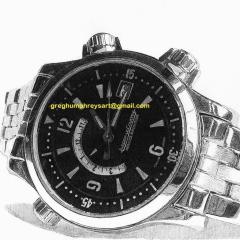-
Recently Browsing
- No registered users viewing this page.
-
Topics
-
Posts
-
No, only about 1000f. But i took pleasure in roasting these annoyingly magnetized parts
-
By BramleyGreg · Posted
Thank you and back at your from Leeds, England. Small world. 😊 -
By Neverenoughwatches · Posted
I have at least one Tritium watch, an mod redial, can't say I've looked into how much it glows. -
By luiazazrambo · Posted
Jacquemart automaton repeating pocket watch. -
Funnily enough, when heating iron or what watchmakers use for making tools which is 'tool steel', or what is also known as 'high carbon steel', as it has a carbon content between about 0.06 to 1.6% carbon content, (but don't quote me on those percentages!) and can be hardened and tempered, when the steel reaches a cherry red, around about 1450 to 1500 degrees Fahrenheit it becomes non-magnetic, so if you placed a magnetic close to or on it there would be no effect at all. I believe it is the steel/iron turning to austenite from martensite, if I remember what I read in an old metallurgy book I picked up in a car boot sale; It's a bit of an esoteric read! In years gone by, cattle bone was used to encase the small piece of steel to be hardened and tempered, so the carbon from the bone was soaked up by the steel when heated for several hours at a particular temperature, in effect 'case-hardening' the steel. It's amazing what we came up with many years ago. We humans are very inventive, yet very destructive.
-








Recommended Posts